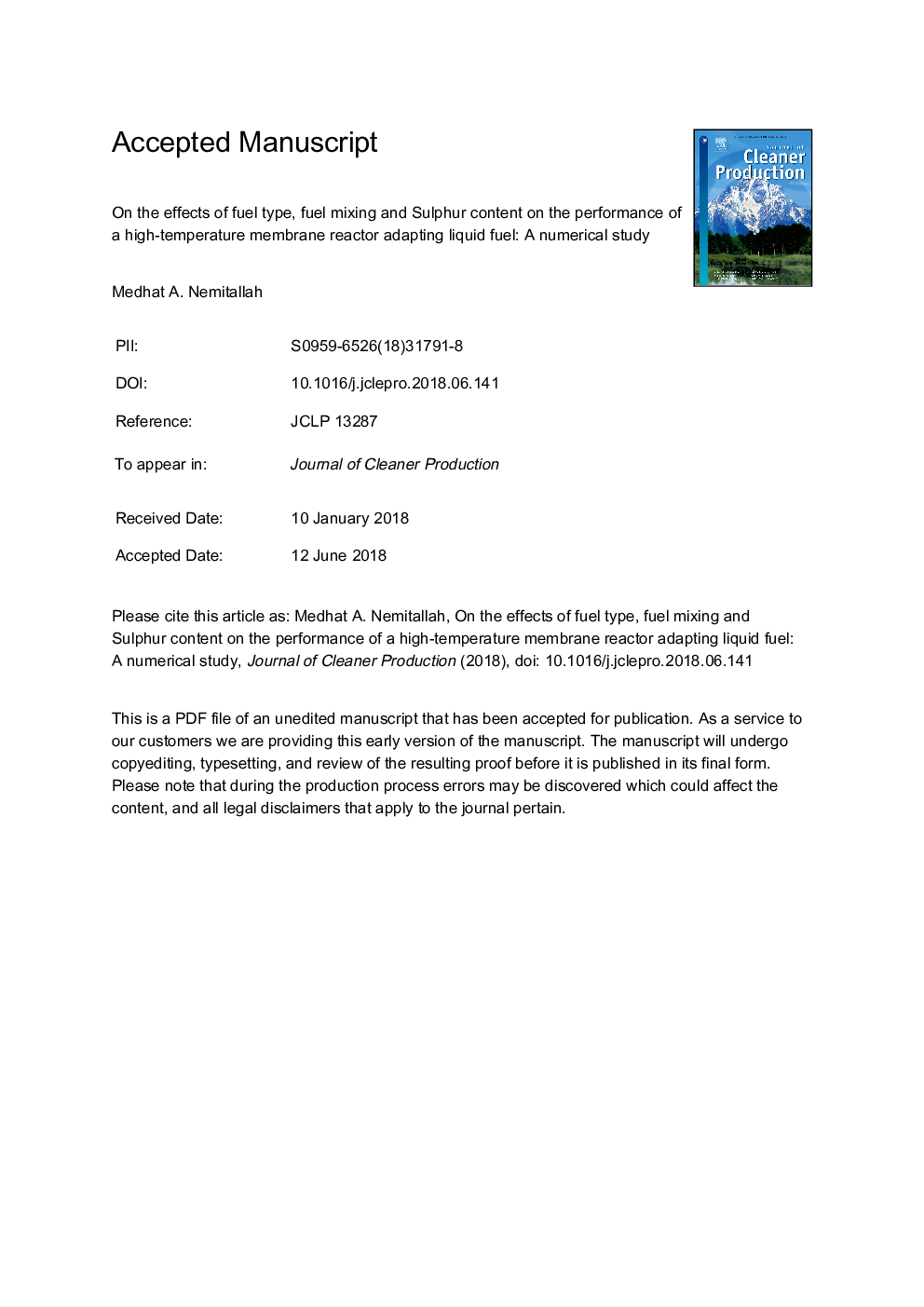| کد مقاله | کد نشریه | سال انتشار | مقاله انگلیسی | نسخه تمام متن |
|---|---|---|---|---|
| 8093984 | 1522057 | 2018 | 30 صفحه PDF | دانلود رایگان |
عنوان انگلیسی مقاله ISI
On the effects of fuel type, fuel mixing and sulphur content on the performance of a high-temperature membrane reactor adapting liquid fuel: A numerical study
ترجمه فارسی عنوان
بر اثر نوع سوخت، مخلوط سوخت و محتوای گوگرد در عملکرد یک راکتور غشاء با درجه حرارت بالا، اقتباس سوخت مایع: یک مطالعه عددی
دانلود مقاله + سفارش ترجمه
دانلود مقاله ISI انگلیسی
رایگان برای ایرانیان
کلمات کلیدی
موضوعات مرتبط
مهندسی و علوم پایه
مهندسی انرژی
انرژی های تجدید پذیر، توسعه پایدار و محیط زیست
چکیده انگلیسی
The study investigates numerically oxygen permeation and combustion and emission characteristics of a button-cell high-temperature membrane reactor (HTMR) handling different grades of liquid fuels including methanol (CH3OH), ethanol (C2H5OH), benzene (C6H6), n-octane (C8H18) and gas oil (C16H29). Effects of mixing different grades of fuels on the HTMR performance are also investigated. A disc-shaped La2NiO4 (LNO) ceramic membrane is used. A plain orifice atomization model is used for numerical calculations of liquid fuel atomization. Fuel is introduced along with CO2 at sweep inlet and air is introduced at fed inlet of the membrane reactor. 2-D axisymmetric mesh was constructed, and simulations were performed using Ansys-Fluent Workbench 15.0. All calculations were performed at fixed inlet gas temperature of 1173â¯K, fixed inlet fuel temperature of 300â¯K and fixed molar fuel concentration of 5% in the vapor phase. For single fuel operation, the highly reactive light oxygenated alcohol fuels resulted in stoichiometric combustion with better oxygen flux compared to rich combustion and low oxygen flux for heavier fuels. Gas oil fuel showed poor fuel evaporation, poor mixing with the sweeping gas, and low reaction rate. Trying to improve the performance of the HTMR while burning heavy fuels, three mixtures of three fuels containing gas oil fuel were tested. The compositions of the mixtures 1, 2 and 3 are 2%C6H6/2%C8H18/1% C16H29, 2%CH3OH/2%C8H18/1%C16H29 and 2%CH3OH/2%C6H6/1%C16H29. The results showed better performance of the HTMR when burning gas oil fuel in a mixture than burning it purely. Mixtures 1 and 2 resulted in about three times and mixture 3 resulted in about six times the oxygen flux value when using pure gas oil fuel. The maximum temperature with the reactor has been improved from 1208â¯K for gas oil fuel to 1383â¯K, 1372â¯K and 1557â¯K for mixtures 1, 2 and 3. Using methanol as fuel additive significantly improve the performance of the HTMR, even better than burning it alone, and enables the use of heavier fuels in HTMR applications. Based on that, the performance of the HTMR was evaluated while burning mixtures of two fuels, one of them is methanol. Three mixtures were considered (mixtures 4, 5 and 6) with the compositions of 4%CH3OH/1%C6H6, 4%CH3OH/1%C8H18 and 4%CH3OH/1%C16H29. Mixing methanol with benzene (mixture 4) resulted in the highest obtained oxygen permeation flux among the tested ranges of pure and mixed fuels. Locations where sulfates compounds are created within the HTMR with respect to the membrane are calculated for proper control of membrane operation while utilizing heavy gas oil fuel with Sulphur content.
ناشر
Database: Elsevier - ScienceDirect (ساینس دایرکت)
Journal: Journal of Cleaner Production - Volume 196, 20 September 2018, Pages 796-807
Journal: Journal of Cleaner Production - Volume 196, 20 September 2018, Pages 796-807
نویسندگان
Medhat A. Nemitallah,
